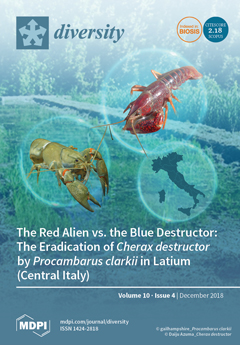North American
Speyeria butterflies are a group of conservation concern and a challenge to butterfly systematists. Establishing species delimitation and evolutionary relationships among
Speyeria has proven difficult due to the polytypic nature of many species, coupled with the similarity of wing patterns of
[...] Read more.
North American
Speyeria butterflies are a group of conservation concern and a challenge to butterfly systematists. Establishing species delimitation and evolutionary relationships among
Speyeria has proven difficult due to the polytypic nature of many species, coupled with the similarity of wing patterns of sympatric species. Recent molecular work has found not all
Speyeria species to be monophyletic, which could be explained by improper species definitions, incomplete lineage sorting, or ongoing hybridization and introgression. However, these studies involved broad geographic sampling where molecular markers such as the DNA barcode may be especially subject to incomplete lineage sorting. Here we focus on a more local scale, analyzing the mitochondrial gene
cytochrome oxidase subunit I (
CoI) to test whether this marker recovers four sympatric
Speyeria species:
adiaste (W. H. Edwards, 1864),
callippe (Boisduval, 1852),
coronis (Behr, 1864), and
zerene (Boisduval, 1852), in the greater San Francisco Bay Area. We found that
CoI works well to separate all four species. Subspecies were less well-defined, with the
S. adiaste subspecies clustering separately, but more mixed for the
S. zerene and
S. callippe subspecies. Overall, our analyses illustrate the utility of the DNA barcode for separating the
Speyeria species and suggest further studies to investigate different geographic scales in order to elucidate genetic diversity patterns in this genus in North America.
Full article





